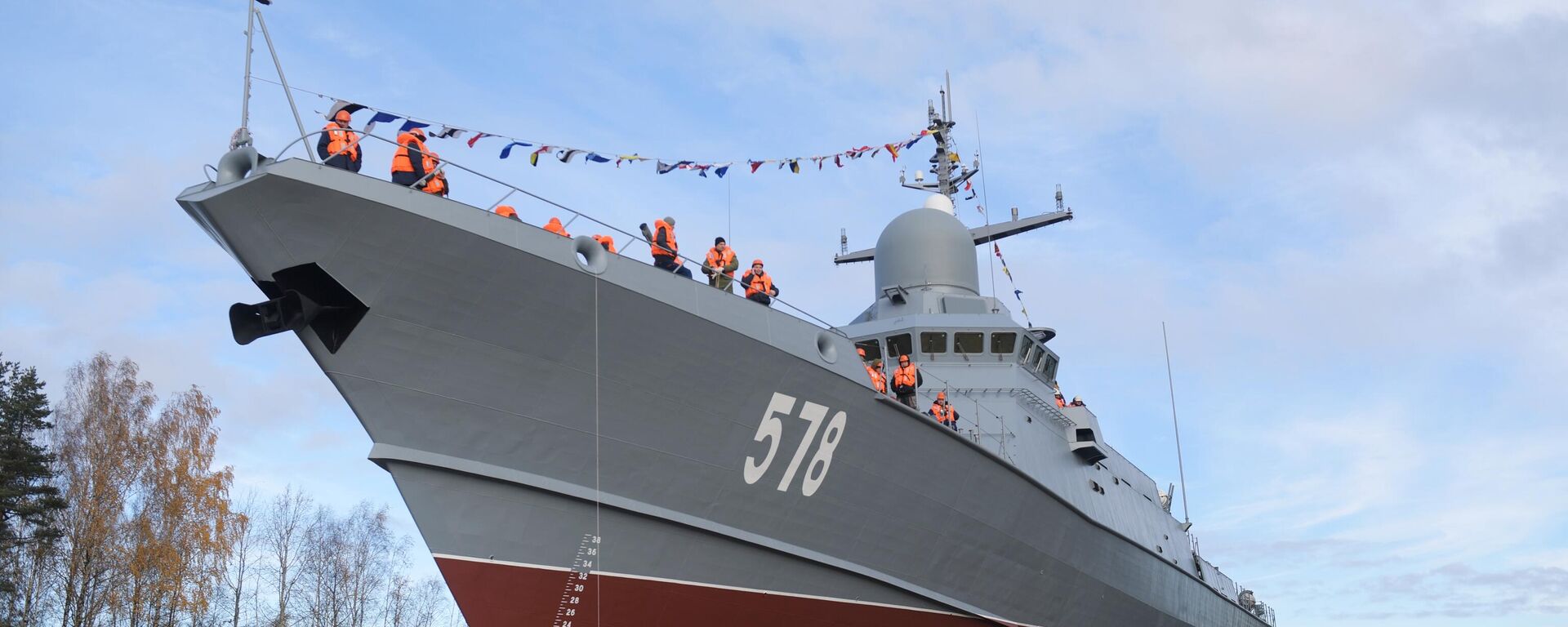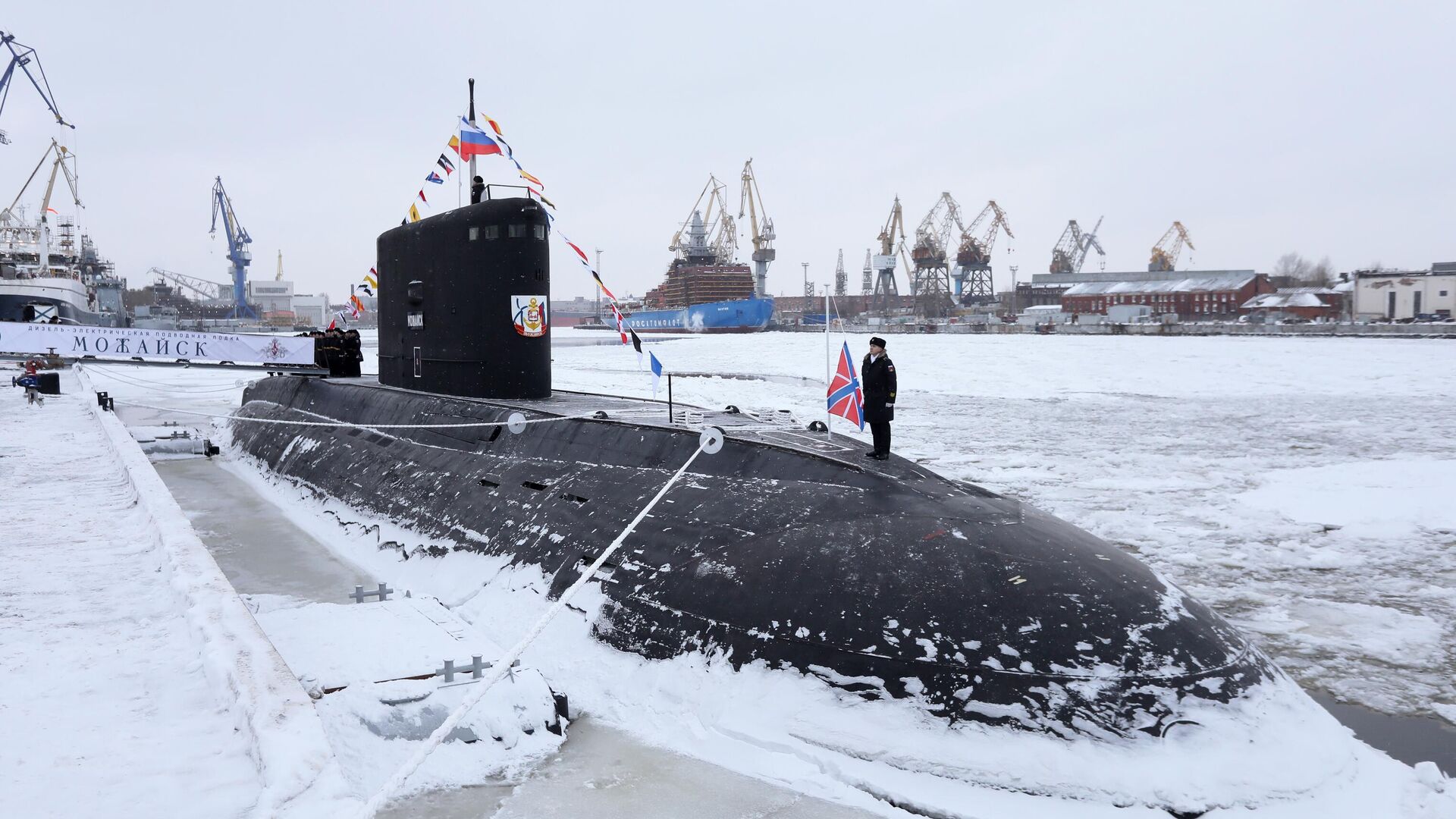https://sputnikglobe.com/20240207/black-hole-subs-to-protect-russias-nuclear-assets-in-far-east-1116646830.html
'Black Hole' Subs to Protect Russia’s Nuclear Assets in Far East
'Black Hole' Subs to Protect Russia’s Nuclear Assets in Far East
Sputnik International
A Russian Project 636.3 Varshavyanka diesel-electric submarine has recently arrived at the Kamchatka Peninsula where the vessel and its crew are currently reconnoitering the waters.
2024-02-07T16:32+0000
2024-02-07T16:32+0000
2024-02-07T16:32+0000
military
military & intelligence
russia
far east
kamchatka
kalibr
kilo-class submarine
varshavyanka-class (project 636.3) submarine
https://cdn1.img.sputnikglobe.com/img/07e7/0b/1c/1115253671_0:130:3048:1845_1920x0_80_0_0_f864dd8b472cc758741f6ceeab39e0e4.jpg
A Russian Project 636.3 Varshavyanka diesel-electric submarine has recently arrived at the Kamchatka Peninsula where the vessel and its crew are currently reconnoitering the waters.Sources in the Russian Ministry of Defense have explained to local media that this is but the first of several such submarines that are going to be deployed in the region soon.Project 636.3 submarines (NATO designation: Kilo-class) are 73.8 meters long with a crew of 52. They can dive to depths of up to 300 meters and maintain a speed of up to 20 knots underwater.Each submarine is armed with six 533mm torpedo tubes. Aside from torpedoes and mines, Project 636.3 can carry and launch Kalibr cruise missiles. The submarines’ arsenal also includes Igla-S and Strela-3 man-portable surface-to-air missile systems.What makes Project 636.3 submarines stand out is their unparalleled ability to avoid detection, earning them the moniker “black hole.”While these submarines can perform various tasks, military analysts interviewed by Russian media suggest that the primary goal of Project 636.3 vessels’ deployment to Kamchatka is to protect the Russian strategic nuclear submarines stationed in the region.
https://sputnikglobe.com/20240103/russian-navy-novelties-meet-burya-supersonic-missile-ship-and-kronstadt-submarine-1115960229.html
russia
far east
kamchatka
Sputnik International
feedback@sputniknews.com
+74956456601
MIA „Rossiya Segodnya“
2024
Sputnik International
feedback@sputniknews.com
+74956456601
MIA „Rossiya Segodnya“
News
en_EN
Sputnik International
feedback@sputniknews.com
+74956456601
MIA „Rossiya Segodnya“
Sputnik International
feedback@sputniknews.com
+74956456601
MIA „Rossiya Segodnya“
kilo class submarines, russian kilo class submarine, diesel electric submarine
kilo class submarines, russian kilo class submarine, diesel electric submarine
'Black Hole' Subs to Protect Russia’s Nuclear Assets in Far East
A fleet of advanced stealthy submarines is expected to bolster Russia’s naval capabilities in the Far East in the not-so-distant future.
A Russian
Project 636.3 Varshavyanka diesel-electric submarine has recently arrived at the Kamchatka Peninsula where the vessel and its crew are currently reconnoitering the waters.
Sources in the Russian Ministry of Defense have explained to local media that this is but the first of several such submarines that are going to be deployed in the region soon.
Project 636.3 submarines (NATO designation: Kilo-class) are 73.8 meters long with a crew of 52. They can dive to depths of up to 300 meters and maintain a speed of up to 20 knots underwater.
Each submarine is armed with six 533mm torpedo tubes. Aside from torpedoes and mines, Project 636.3 can carry and launch Kalibr cruise missiles. The submarines’ arsenal also includes Igla-S and Strela-3 man-portable surface-to-air missile systems.

3 January 2024, 16:36 GMT
What makes Project 636.3 submarines stand out is their unparalleled ability to avoid detection, earning them the moniker “black hole.”
While these submarines can perform various tasks, military analysts interviewed by Russian media suggest that the primary goal of Project 636.3 vessels’ deployment to Kamchatka is to protect the Russian strategic nuclear submarines stationed in the region.



